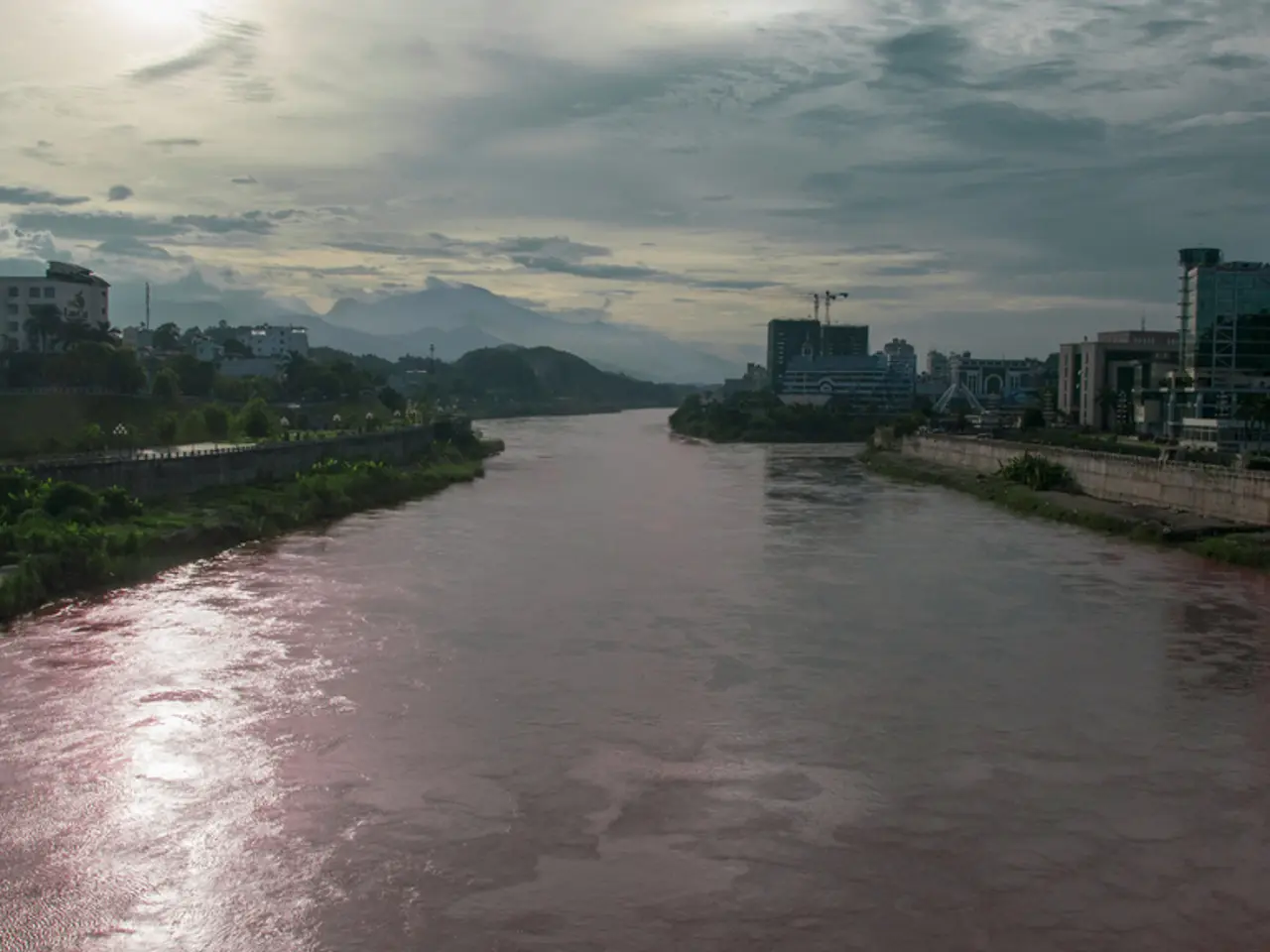Liquid Sanctified by Religious Rites, Commonly Used in Christian Ceremonies
============================================================
In the heart of India, the sacred Ganges River has been a significant part of Ashish Shah's life, showing him different aspects of life, including celebration and death. Growing up with the Ganges as a part of his community and his life, Ashish Shah has memories of fishing, singing, and warnings about the river shores at night.
The Ganges provides physical and spiritual sustenance to millions, but it also reflects the darker corners of human nature. Despite its toxicity in some places, millions of people still drink and wash clothes in the river. Millions of liters of wastewater containing toxic elements and metals are dumped in the Ganges, a stark reminder of the human impact on this sacred waterway.
The Ganges is a source stream of the Bhagirathi River, and Ashish Shah's ancestral village is located on the bank of the Bhagirathi. The river, despite suffering abuse from its own people, is seen by Ashish Shah as a mother, symbolizing acceptance and perseverance. This sentiment is shared by many, as the Ganges is considered a living entity.
The Kedarnath floods of 2013 dramatically changed the Ganges from passive to active, causing over 5,000 deaths and affecting around 4,500 villages. The floods significantly altered the river, making it more active and underscoring the intersection of natural disasters and human activity. Other initiatives, such as waste reduction campaigns in South Asia, focus on protecting river ecosystems from plastic and other pollution.
Strong environmental ethics are deeply rooted in India's culture, but industrialization, overpopulation, consumerism, poverty, and a lack of education have caused India to deviate from its wisdom. The National Institute of Urban Affairs and other Indian institutions have prioritized research on pollution in the Ganges River Basin and its revival through policy and community engagement. These efforts address broad human impacts on the river’s health.
Despite his hesitance during travel, Ashish Shah, who is known as a photographer focusing on social and environmental issues, grew up drinking water from the Ganges. His uncle took his own life in the Ganges, leaving a profound impact on Ashish. The river continues to provide sustenance and life to many people around it.
While the environmental issues of pollution and floods impacting the Ganges River are well documented, no specific search result confirms Ashish Shah’s photographic work on this theme as of now. If you are looking for Ashish Shah’s photography series specifically, you may need to explore his official website, photographic journalism platforms, or exhibition catalogs, as it is not documented in the recent academic or policy literature indexed here.
- Ashish Shah, a photographer focusing on social and environmental issues, has a deep connection with the Ganges River, as it has been a significant part of his community and life.
- The Ganges River, considered a living entity by many, is a crucial source of physical and spiritual sustenance for millions, but its health is threatened by human activities such as industrialization, overpopulation, and lack of education.
- Despite the toxicity in some places and the dumping of wastewater containing harmful elements, people still drink and wash clothes in the Ganges, demonstrating the complex relationships between culture, lifestyle, and environmental challenges.
- The Ganges River, being a source stream of the Bhagirathi River, is valued not just for its natural beauty but also for its symbolism, representing acceptance, perseverance, and the intersection of the natural world and human life.
- Efforts to protect the Ganges River ecosystem and address its pollution issues are ongoing, with initiatives like waste reduction campaigns in South Asia and research by institutions like the National Institute of Urban Affairs focused on policy and community engagement.
- Ashish Shah's photographic work documenting the environmental and social issues surrounding the Ganges River may not be widely documented in recent academic or policy literature, but it can be found on his official website, photographic journalism platforms, or exhibition catalogs.





